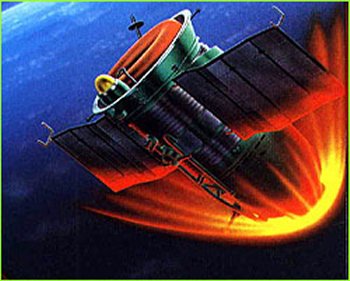Soyuz TMA-M to be renamed Soyuz TMA-T in the near future

A Soyuz FG rocket launched the Soyuz TMA-16M spacecraft from the Baikonur Cosmodrome ahead of a successful docking with the International Space Station (ISS) on Friday. The Russian workhorse Soyuz TMA-M might soon be replaced with a new version called TMA-T where T stands for Teplovoi Ecran or Heat Shield in Russian.
From Soyuz TMA-M to Soyuz TMA-T:
The improvment of Soyuz has its roots in the memorable flight of Soyuz 5 and its dramatic re-entry. The service module of the Soyuz failed to separate after retrofire. The combined spacecraft started reentry in the most aerodynamically stable position - nose forward. With every minute the G forces increased. Volynov did his duty with all of his strength but this became increasingly difficult since he was hanging in the straps of his seat with the G forces assailing him in the opposite direction from what planned. Soon a strong smell penetrated the cabin - the rubber gaskets of the hermetic seal of the hatch were burning.

He remained alive when a miracle occurred. The fuel tank of the service module finally exploded and the module separated from the re-entry vehicle. The capsule turned around to an aerodynamically stable position at hypersonic speed and the heat shield finally took the brunt of the heating as designed. The spacecraft continued on a 9 G ballistic trajectory. The damage to the capsule resulted in a failure of the soft-landing rockets. The landing was harder than usual and Volynov broke his teeth. The capsule was recovered 2 km SW of Kustani, far short of its aim point.
The same mishap happened several years later with Soyuz TMA-11. As for Soyuz 5 the stress of reentry finally severed the instrument module from the reentry module but with the ballistic trajectory the astronauts had to support 10 g and landed more than 400 km from their aimed landing site.The Korean astronaut Yi So-yeon suffered minor back injuries and was hospitalized.
A supplementary heat shield for the Soyuz descent module:To avoid the same problem in the future the Russians have decided to equip the descent module hatch with a heat shield. It was felt the crews of Soyuz 5 and TMA-11 were lucky since the instrument module separated before the heat of reentry started to burn through the hatch. After several feasibility studies it was decided to equip the hatch with thermal tiles similar to those installed on the Orion spacecraft. In order to test the concept a modified hatch will be installed on a next Progress spacecraft. If the test is successful Soyuz TMA-T will be the new workhorse to the ISS.

The descent module hatch is clearly seen on the bottom of this picture. Orion type thermal tiles will be glued onto the aluminium dome to add further protection in case of nose first reentry
(Images via NASA, Roscosmos, and Tezio).































